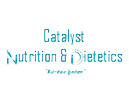Not only is exercising in pregnancy safe, it also has many positive effects on both mother and fetus. There are however a few important risks to consider to maximize the benefits and to keep both mother and baby safe.
Benefits to the mum
- Reduced rates of depression, post-natal depression and ‘baby blues’
- Reduced rates of back pain
- Reduced risk of pre-eclampsia
- Reduced risk of gestational diabetes
- Reduced risk of fetal macrosomia (abnormally big babies) (yes that is a benefit to the mum!)
- Reduced reflux/heartburn/gastritis
- Improved bladder control
- Improved weight control
- Better Cardiac Output
- Better Balance
- Improved overall fitness
Benefits to the Fetus
- Increased stress tolerance
- Reduced organ fat
Things that exercise doesn't change
- No change to the length of labour
- No change in risk of perineal tearing in labour
- No change to the requirement of pain relief during delivery
- No change to the chance of prematurity
And, there are also some risks
Risks to the mother
- Risk of soft tissue injuries increases (due to a hormone called relaxin which makes soft tissues more stretchy)
- Risk of falls (due to altered body weight-distribution and centre of gravity)
- Increased risk of exercise-induced hypotension (drop in blood pressure and feeling faint immediately after exercise)
Risks to the baby
- Severe hyperthermia can induce fetal malformations and neural tube defects (spina bifida) in early pregnancy.
- The risk of falls is also a fetal risk if it results in direct trauma
- Exercising supine can increase pressure on the vena cava (main vein into the heart) reducing the return of blood to the heart.
So, the advice is.......
(disclaimer: all of the following advice is for uncomplicated, low-risk pregnancies. For exceptions and contra-indications see the end of this article)
Keep exercising throughout pregnancy as it has a wide range of benefits for you and your baby
Completely avoid the following
- SCUBA diving
- Supine exercise after 1st trimester
- HIIT (or any high intensity anaerobic exercise)
- Exercising in the heat (especially in the first trimester)
- Anything that will expose you to high G-forces
- Ballistic stretching
- Any exercise at high altitude
Be careful with:
- Any activity with a high risk of falling
- Any activity with a high risk of abdominal trauma
- Any manoeuvers requiring a high level of balance and control
About running……..
- Don’t start running if you are not already accustomed to running regularly
- If you are a seasoned runner, you can run right into your third trimester if you listen to your body and stop once it starts feeling uncomfortable
About weight training……
Low weight, high reps, no supine lifting, no straining/Valsalva (when you hold your breath and strain so hard your face goes red)
About swimming…….
Fantastic for expectant mums. All swimming strokes other than backstroke are performed prone (opposite to supine). It is weight-supported, reduced oedema (swelling) and is very good for temperature regulation while exercising.
Intensity / Duration / Frequency
- Up to 80% of maximum heart rate is ok
- Up to an hour per session is ok at moderate intensity
- Daily exercise is ok
- No need to progress – think of it as fitness maintenance rather than trying to improve.
But, there are some absolute exceptions to all of this. See below for a list of absolute (and relative contraindications to exercise in pregnancy.
Absolute Contraindications to Exercise
- Significant Cardiovascular Disease
- Restrictive lung disease
- Incompetent cervix
- Multiple gestations at risk of premiturity
- Persistent bleeding 2nd/3rd trimester
- Placenta praevia after 26 week gestation
- Premature rupture of membranes during current pregnancy
Relative Contraindications to Exercise
- Severe anaemia
- Chronic bronchitis
- Heavy smoker
- Unevaluated maternal cardiac arrhythmia
- fetal growth retardation in current pregnancy
- Poorly controlled type 1 diabetes or high blood pressure
- Poorly controlled seizure disorder
- Poorly controlled thyroid disorder
- History of extremely sedentary lifestyle
- Extreme morbid obesity





















